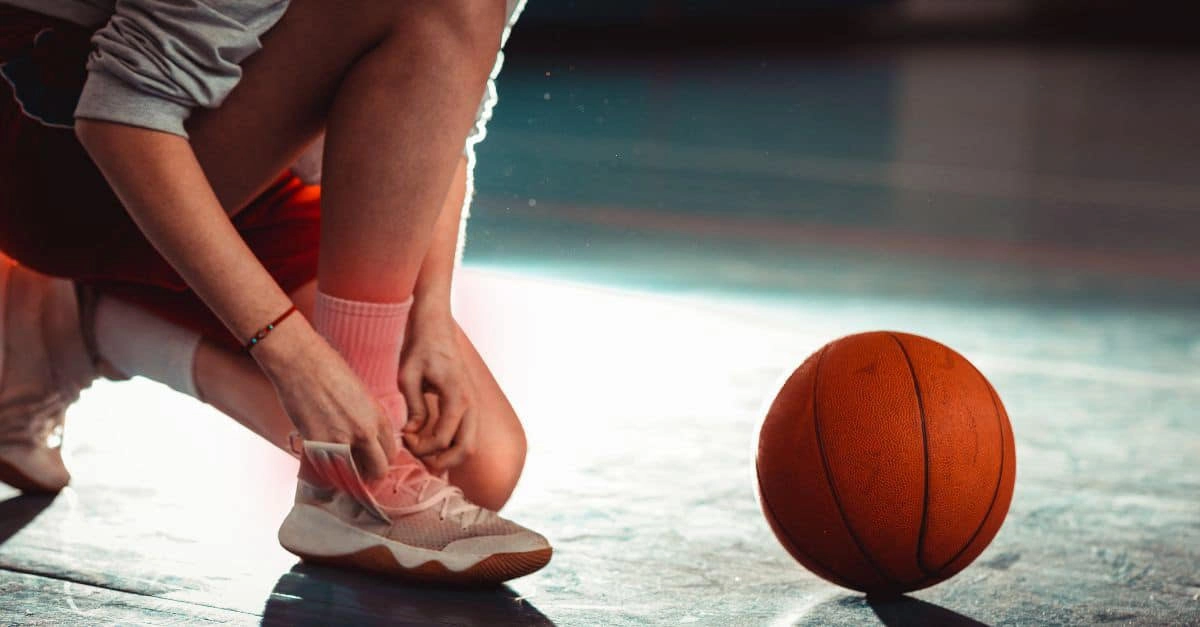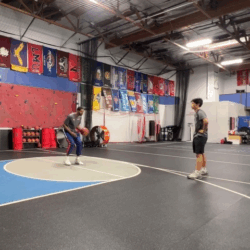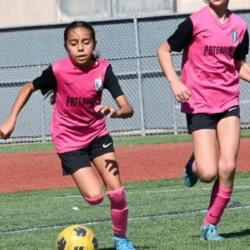Ankle sprains, ankle prevention, ankle recovery
By: Jared Chatham
Understanding Ankle Sprains: Causes, Types, and Prevention
Ankle sprains are a significant reason athletes miss game time and are one of the most common injuries in sports. In this article, we’ll explore the main causes of ankle sprains, the different types, and strategies for prevention and recovery.
What is an Ankle Sprain?
Ankle sprains involve the tearing of ligaments in the ankle, with the most common sprain occurring in the lateral (outer) part. Most athletes experience an ankle sprain at some point, often due to falls or trips on uneven surfaces, incorrect landings after jumps, loss of balance, or activities that involve sudden cuts and twists of the foot. Sports like basketball, football, soccer, and tennis are particularly prone to these injuries. While sprained ankles can sometimes feel like fractures, they are distinct injuries.
Types of Ankle Sprains and Recovery Time
Ankle sprains are classified into two main categories: anatomical and functional.
Anatomical Classifications:
- Grade I: Lateral ligaments are strained (overstretched).
- Grade II: Partial tearing of one or more ligaments.
- Grade III: Complete rupture (tear) of one or more ligaments.
Functional Classifications:
- Grade I: The athlete can fully bear weight and walk.
- Grade II: The athlete walks with a noticeable limp.
- Grade III: The athlete is unable to walk.
This grading system helps predict recovery timelines, which can range from 1 to 2 weeks for
Grade I injuries to 6 to 8 weeks for Grade III injuries (Darko, 2018).

Prevention and Recovery
Now that we’ve discussed the types of ankle sprains and their recovery times, let’s focus on how to reduce the risk of spraining an ankle.
1. Strengthening Ankles and Balance Training:
Exercises like front foot elevated calf raises can help strengthen the ankles. Additionally, improving core strength is vital, as strong hips and abdominals can significantly reduce the risk of ankle injuries.
2. Proper Warm-Up:
To prevent ankle injuries, consider bracing or taping if you’re prone to sprains. A proper warm-up should include exercises and stretches for the Achilles tendon, ankle eversion, ankle inversion, and both plantar and dorsiflexion.
3. Proper Footwear:
Wearing the right footwear is crucial. Ensure your shoes fit correctly and are appropriate for your sport. It’s advisable to replace worn-out shoes regularly and lace them tightly for support. Choose shoes that allow your toes to spread comfortably.
4. Terrain Awareness:
Be mindful of the surfaces you’ll be playing on. Ideal terrains include synthetic tracks, smooth asphalt, well-maintained park trails, grass, and treadmills, which can reduce stress on your ankles.
5. Listen to Your Body:
Many athletes ignore their bodies’ signals, risking further injury. Pay attention to signs of fatigue, soreness, or pain, and prioritize rest when needed. Consistency in training is essential, but so is knowing when to step back.
What to Do If You Sprain Your Ankle?
If you do sprain your ankle, use the PRICE method within the first 24-48 hours:
Protection: Use crutches or a brace to limit movement.
Rest: Avoid activities that could aggravate the injury (no running, jumping, or exercising).
Ice: Apply ice or a cold pack wrapped in a towel for 20-minute intervals to reduce swelling.
Compression: Wrap your ankle gently with an elastic bandage to decrease swelling.
Elevation: Raise your ankle above heart level using pillows while sitting or lying down.
Repeated ankle sprains can lead to long-term issues. Athletes must be mindful of their bodies and take preventive measures seriously. Injuries are common in sports, but diligent training and awareness can significantly reduce the risk.
References
Ankle sprain symptoms & causes FootCareMD. (n.d.).
https://www.footcaremd.org/conditions-treatments/ankle/ankle-sprain
Types of ankle sprains & their treatments: HSS Foot & Ankle. Hospital for Special Surgery.
(n.d.).
https://www.hss.edu/conditions_ankle-sprains-types-treatments.asp
How to prevent another ankle sprain: 5 proactive steps: Oinj. The Orthopedic Institute of
New Jersey. (n.d.).
https://orthopedicnj.com/news/how-to-prevent-ankle-sprain
Sprained ankle: Symptoms, types, treatment & recovery. Cleveland Clinic. (2024, May 1).
https://my.clevelandclinic.org/health/diseases/22048-sprained-ankle


